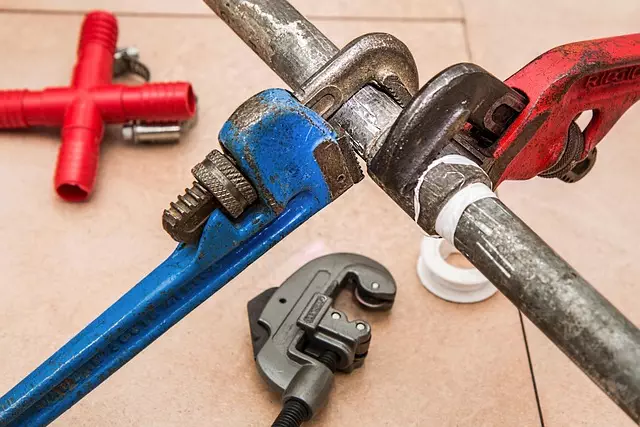Concrete stem wall damage requires immediate attention as it often indicates deeper foundation problems. Common causes include ground movement, poor construction, water intrusion, and extreme temperatures. Visual inspection is crucial to identify cracks, bulges, or uneven surfaces. Experts use high-quality materials like epoxy injections to fill cracks and prevent further damage from water and freeze-thaw cycles. For severe cases, professional help is recommended to assess and repair large cracks, bulges, and structural instability. Regular inspections, sealing, and waterproofing can prevent damage and extend the life of stem walls. Budgeting should consider immediate and long-term costs, including labor rates and material expenses like concrete and rebar. Prioritize durability and aesthetics with quality materials and regular maintenance for lasting repairs.
Concrete stem wall repair is a crucial aspect of residential foundation maintenance. Understanding common damage indicators, such as cracks, bulges, or water infiltration, is essential for timely intervention. This article guides you through the process, from identifying issues through inspection to selecting appropriate repair materials and techniques. We’ll walk you through a step-by-step approach, offer tips for long-term prevention, and discuss when professional help might be needed for complex repairs, ensuring your home’s structural integrity and aesthetic appeal with effective residential foundation repair solutions.
Understanding Concrete Stem Wall Damage: Common Causes and Indicators

Concrete stem wall damage can be a serious concern for homeowners, often indicating deeper issues with residential foundation repair. Understanding the common causes and indicators is essential for prompt action. One of the primary culprits is ground movement, whether from settlement or expansive clay soils, which can cause cracks and misalignments in the stem wall over time. Other factors include poor initial construction, such as inadequate reinforcement or improper concrete mix, making the wall more susceptible to damage.
Water intrusion is another significant contributor, leading to corrosion of steel reinforcement bars and deterioration of the concrete itself. This is especially problematic in areas prone to heavy rainfall or flooding. Additionally, extreme temperatures can cause thermal expansion and contraction, further exacerbating existing cracks. Homeowners should watch for visible signs like cracks, bulges, or uneven surfaces, indicating potential problems that require professional intervention for effective residential foundation repair.
The Role of Inspection: Identifying Potential Issues Early

A thorough inspection is the cornerstone of any successful concrete stem wall repair project, especially in residential foundation repair scenarios. By meticulously examining the wall and its surrounding structure, professionals can identify potential issues at their inception, preventing what could become costly and devastating problems. This proactive approach is vital for maintaining the integrity of a home’s foundation.
During inspection, experts look for cracks, uneven surfaces, or signs of water damage. These indicators could suggest structural instability or the presence of moisture, which, left unaddressed, might lead to further deterioration. Early detection allows for timely repairs, ensuring the longevity and stability of the residential foundation.
Materials and Techniques for Effective Repair

When it comes to concrete stem wall repair, the right materials and techniques are essential for ensuring structural integrity and longevity in residential foundation repair. Key components often include high-quality epoxy injections or polymeric compounds, which fill cracks and weak spots, providing robust support. These advanced materials not only strengthen the wall but also resist further damage from water infiltration and freeze-thaw cycles.
Effective techniques involve first assessing the extent of damage through non-invasive methods, such as visual inspection and moisture testing. Once identified, the affected area is cleaned, prepared, and treated accordingly. For larger cracks, a combination of steel reinforcement bars and specialized repair compounds may be employed to create a robust, lasting fix. This meticulous approach, tailored to each unique situation, guarantees a sturdy and secure residential foundation repair solution.
Step-by-Step Guide to Stem Wall Repair: A Practical Approach

Concrete stem wall repair is a crucial aspect of residential foundation repair, ensuring structural integrity and longevity for your home. Here’s a practical, step-by-step guide to effectively repairing stem walls:
1. Inspection and Assessment: Begin by thoroughly inspecting the stem wall for any cracks, bulges, or signs of water damage. Identify the extent of the damage, noting its size, depth, and location. This initial step is vital as it guides your repair process and determines the appropriate techniques to employ.
2. Preparation: Clear the area around the damaged stem wall, removing any debris, vegetation, or obstructions. Ensure proper ventilation in the repair zone for safety and to prevent moisture buildup. If necessary, use tools like chisels or hammer drills to clean out cracks and remove loose concrete, creating a clean surface for repairs.
When to Consider Professional Help for Complex Repairs

When concrete stem walls show signs of severe damage, such as large cracks, bulges, or uneven surfaces, it may be time to consider professional help. Complex repairs often require specialized equipment and expertise, especially for residential foundation repair. Professionals are equipped to handle situations where traditional DIY methods might not suffice.
They can assess the extent of the damage, determine the cause, and provide tailored solutions. This is particularly crucial in cases of structural instability or when the issue is related to the building’s foundation. Relying on professionals ensures that repairs are done correctly, minimizing future problems like shifting walls or uneven floors.
Long-Term Maintenance: Preventing Future Damage

Concrete stem wall repair is an essential part of long-term maintenance for any residential property. To prevent future damage, it’s crucial to address potential issues early on. Regular inspection is key; checking for cracks, water damage, or signs of erosion can help identify problems before they become severe. Simple preventive measures like sealing and waterproofing can significantly extend the life of your stem walls, guarding against moisture intrusion that often leads to deterioration.
For homeowners, incorporating a maintenance schedule into their routine—including annual checks and timely repairs—is vital for protecting their investment in residential foundation repair. By taking proactive steps, you can avoid costly and time-consuming renovations down the line, ensuring your home’s structural integrity remains intact for years to come.
Cost Considerations: Budgeting for Concrete Stem Wall Repair

When budgeting for concrete stem wall repair, it’s essential to consider both the immediate and long-term costs. The price can vary significantly depending on several factors unique to your property. One of the primary considerations is the extent of damage; minor cracks or repairs might be less expensive, while extensive structural issues will require more substantial investment. Additionally, labor rates in your area play a significant role; higher local wages can increase overall repair costs for residential foundation repair.
Material expenses are another critical aspect. Concrete stem wall repair often involves replacing damaged sections with new concrete, rebar, and possibly other reinforcing materials. The quantity and type of materials needed will influence the total cost. It’s also wise to account for potential unforeseen issues that may arise during the repair process, such as unexpected structural weaknesses or soil conditions that require specialized techniques or additional materials.
Tips for Ensuring a Durable and Aesthetic Restoration

When undertaking concrete stem wall repair, especially as part of a residential foundation repair solution, it’s crucial to focus on durability and aesthetics for a long-lasting, satisfying result. Start by preparing the surface thoroughly; clean away any debris, old mortar, or damaged concrete pieces. This step ensures a clean canvas for new repairs, enhancing the longevity of the fix.
Use high-quality materials suitable for exterior applications and consider the existing aesthetic of your property. Matching the texture, color, and finish of the surrounding concrete will preserve the building’s overall look. Regular maintenance is also key; apply sealing agents or waterproof coatings as recommended by manufacturers to shield against moisture intrusion, a leading cause of concrete deterioration.
